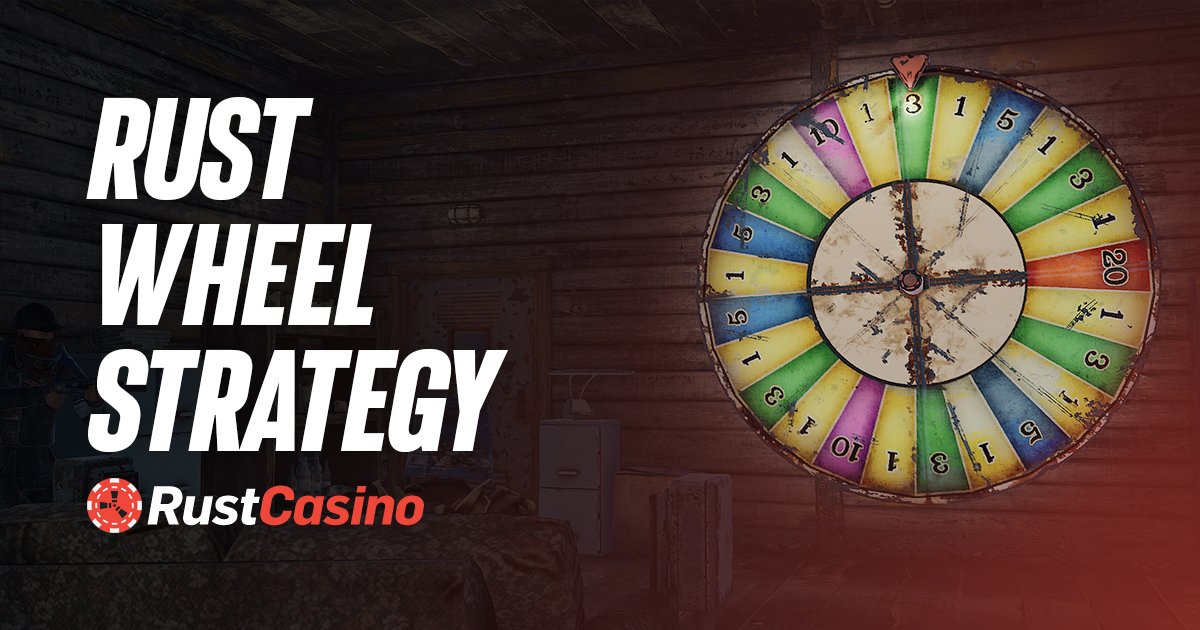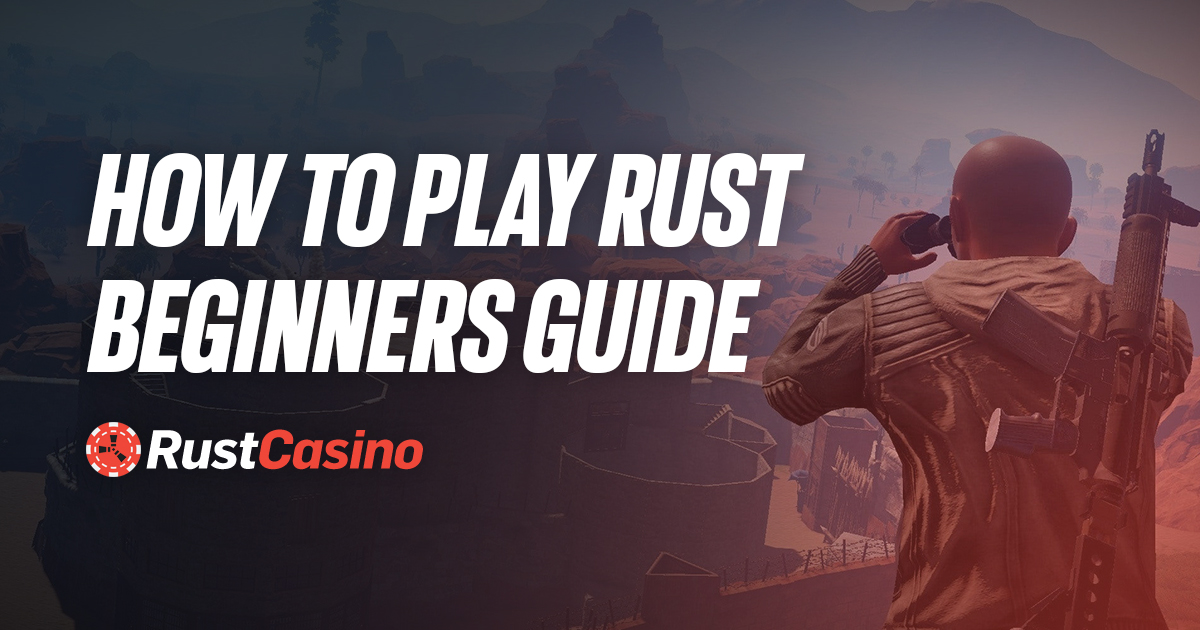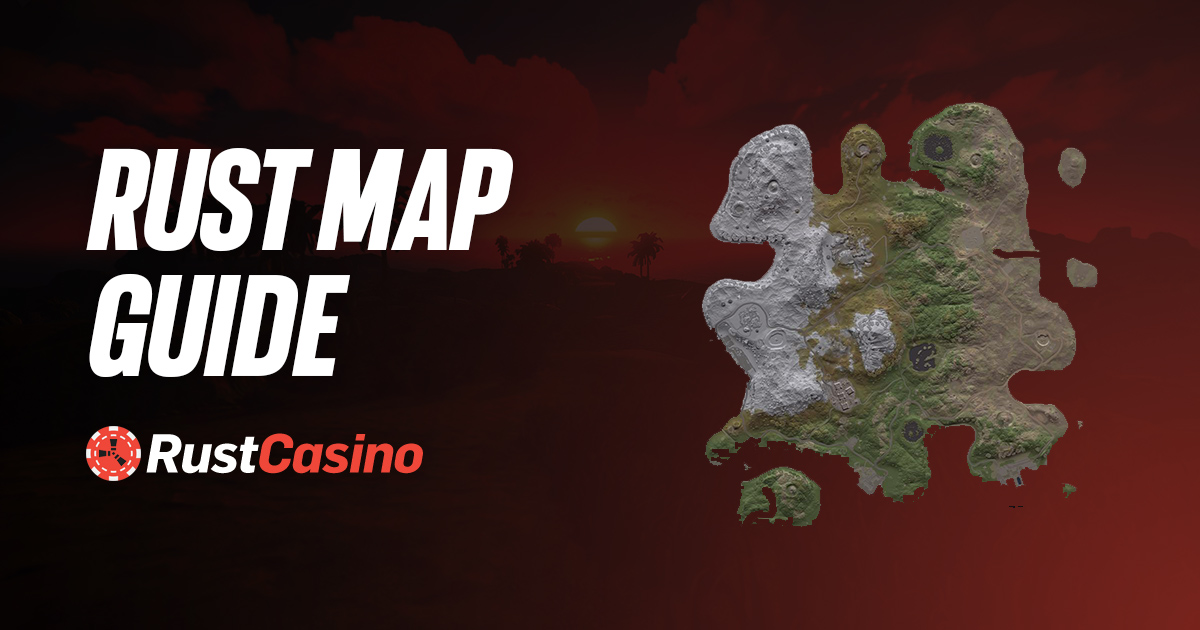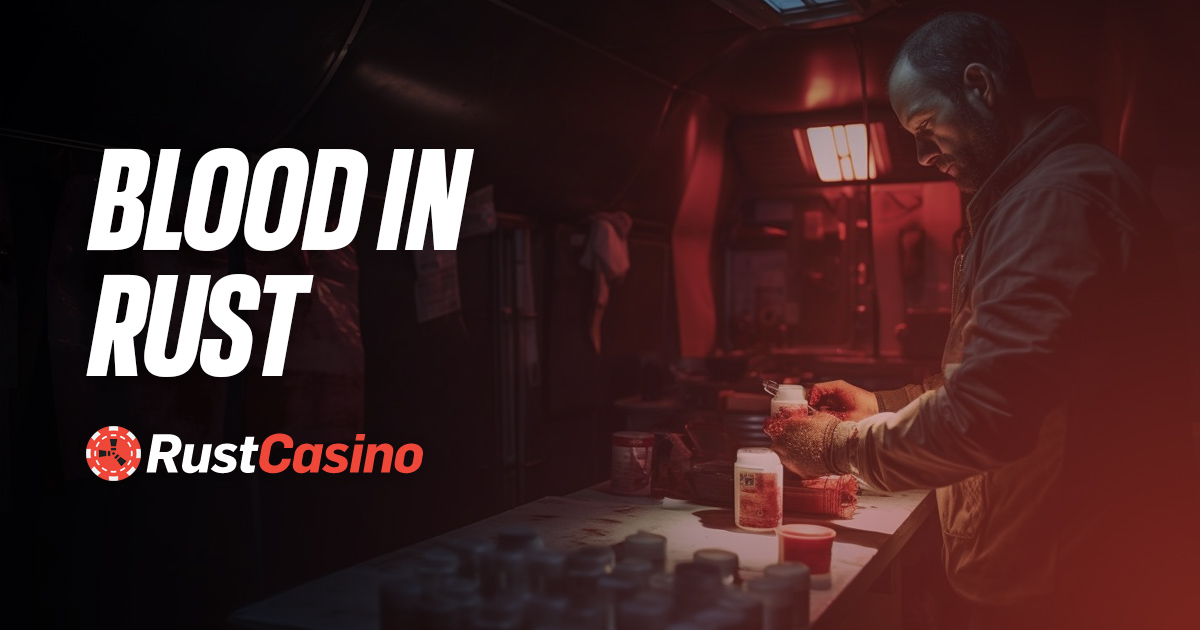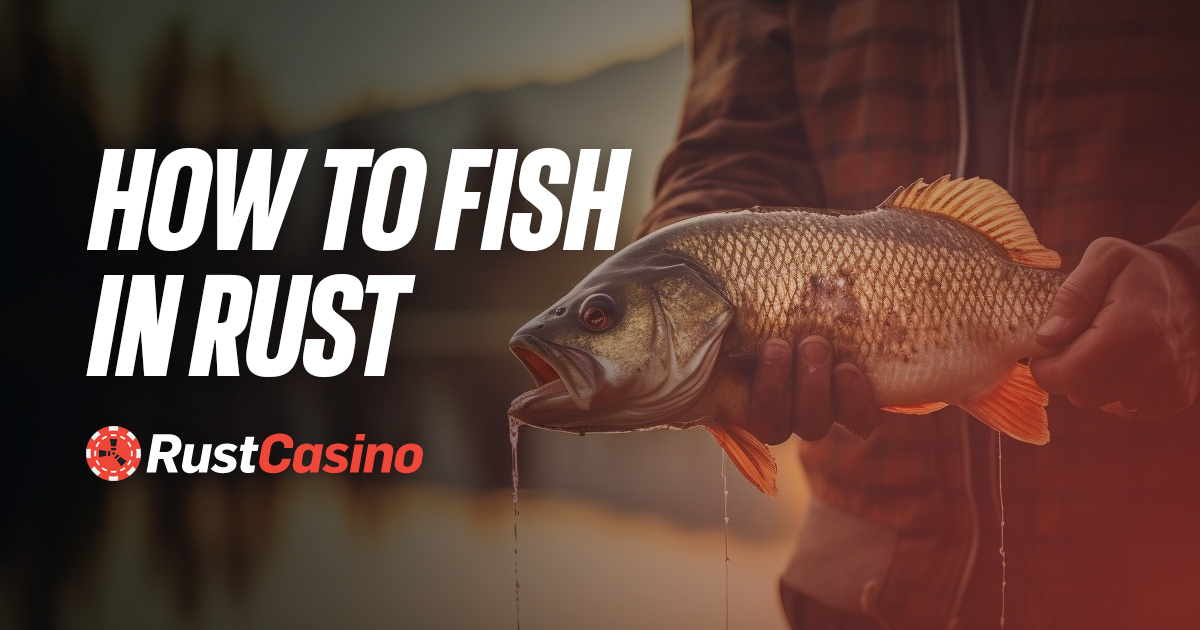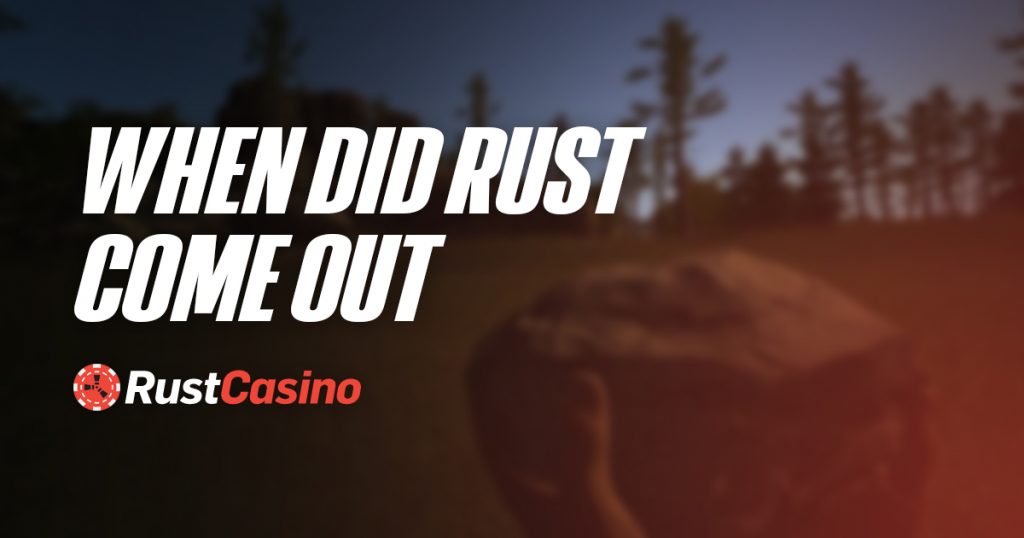
When did Rust come out? The short answer is that Rust first appeared on the gaming scene in December 2013 as an Early Access title, eventually receiving its full release in February 2018. These two milestones mark major turning points in its history, shaping how millions of players experienced—and continue to experience—the game. Whether you’re a diehard fan or a newcomer just now hearing about this popular survival title, understanding when Rust came out and how it has evolved over time is key to diving headfirst into its unforgiving world.
Below, you’ll find a complete breakdown of Rust’s release dates, development history, and everything you need to know about how it went from a small project heavily inspired by DayZ and Minecraft to one of the most iconic multiplayer survival games ever made.
Origins of Rust
Before exploring the timeline of when Rust came out, it’s helpful to understand its origins. Developed by the UK-based Facepunch Studios and led by Garry Newman (of Garry’s Mod fame), Rust started as an ambitious project blending elements from other popular survival games. Early prototypes and design documents show how Rust took inspiration from:
- DayZ: The intensely survival-focused mod for ARMA 2, where players contend with hunger, thirst, and relentless zombies.
- Minecraft: The crafting aspect—Rust’s foundation for building bases, forging weapons, and creating tools—drew from the sandbox creativity that Minecraft players loved.
In its earliest iterations, Rust featured zombies and other hallmark survival threats. Over time, though, Facepunch pivoted away from traditional undead foes and replaced them with more realistic survival challenges like hostile wildlife and punishing player-versus-player encounters. This shift marked the first sign that Rust was going to forge its own path, standing apart from the other survival games dominating the market.
Early Access Days (2013–2018)
Entry into Steam Early Access (December 2013)
The best place to start answering when did Rust come out is December 2013, when the game officially launched into Steam Early Access. This stage—often referred to as Rust Legacy—allowed eager players to buy into a work-in-progress title and help shape its development through feedback, bug reports, and gameplay data. Initially, Rust still had a lot of DNA from DayZ, with zombies scattered around the map, but that element didn’t stay for long.
For many, the Rust Legacy era was both thrilling and chaotic. The servers were smaller, the crafting system simpler, and the community extremely vocal, especially regarding balancing issues like loot distribution and player-versus-player combat. Despite these growing pains, players recognized Rust’s potential. The game quickly amassed a dedicated following that documented every update, every bug fix, and every newly introduced feature.
Significant Changes During Early Access
From 2013 to 2018, Rust saw dramatic upheavals and upgrades:
- Removal of Zombies: Initially, zombies served as the primary environmental threat. Rust soon swapped them out for wolves and bears to create a more grounded, realistic setting.
- Crafting Revisions: The crafting system went through several iterations. This included the introduction of blueprints, the removal of blueprints in favor of experience points, and eventually reverting to a blueprint-focused system again.
- Unity 5 Game Engine: Rust was ported to Unity 5, bringing major graphical improvements such as better lighting, shading, and overall performance optimization.
- Procedurally Generated Maps: Before these were introduced, Rust Legacy offered only a static map. Once procedural generation kicked in, every server wipe could mean a brand-new terrain layout, forcing players to adapt each time.
These alterations helped Rust find its identity. It was no longer just a “zombie survival game”—it was an ever-evolving sandbox where players had to manage hunger, thirst, and their health while forging alliances and fending off attacks from other survivalists.
Community Reception
During Early Access, Rust’s reception was mixed. Players praised the game for its innovative blend of survival mechanics and intense PvP, but many reviews echoed common frustrations. Bugs, glitches, and constant changes made the experience unpredictable. Some critics described Rust as “unfinished,” noting that Facepunch Studios often reworked key systems multiple times in short succession.
Still, the overwhelming consensus was that Rust had immense potential. Its knack for spontaneous, player-driven storytelling kept people hooked. You could be scavenging a forest one minute and barricading your base from raiders the next. Even in its rough state, Rust’s ability to deliver adrenaline-pumping moments made it stand out in the Early Access crowd.
Full Release in 2018
After five years of iterative development, the answer to when did Rust come out in full was February 2018. This was the moment Rust officially “graduated” from Early Access. In practical terms, the game had already sold millions of copies and built a huge community. However, the developers viewed the full release as a major milestone marking greater stability and a more refined player experience.
Key Updates at Full Launch
- Polished Combat Mechanics: The gunplay and bow mechanics received tweaks to make them feel more like a traditional first-person shooter, which included more accurate recoil patterns and bullet trajectories.
- Improved Graphics and Performance: The final version launched with enhanced textures, lighting, and water effects, raising the game’s overall visual appeal.
- Monthly Update Cycle: Post-launch, Facepunch switched from weekly updates to a monthly schedule, aiming to release more stable, well-tested patches rather than quickly pushing out new features.
Immediate Post-Release Reception
Following the official release, Rust garnered a mix of positive and critical feedback. Reviewers often emphasized the game’s highly competitive environment, describing it as both unforgiving for new players and incredibly rewarding for veterans who could create well-fortified bases and coordinate with clans. If you liked a challenge that combined crafting, survival, and human unpredictability, Rust was—and continues to be—an extraordinary experience.
Ongoing Development After Full Release
A full release rarely signals the end for a modern online game. Rust is no exception. Since February 2018, Facepunch has kept Rust’s evolution in motion with regular updates and expansions, including:
- New Weapons & Tools: Ranging from advanced firearms to melee tools, giving players ever more ways to raid or defend.
- Vehicles: Boats for aquatic travel, hot air balloons for aerial exploration, and even modular cars that players can customize and maintain.
- Paid DLC Packs: Cosmetic add-ons like the “Instruments Pack,” which introduced playable musical instruments, or the “Sunburn Pack,” featuring summer-themed items such as swimming pools and beach accessories.
- Safe Zones & NPCs: Markets and trading outposts guarded by non-player turrets encourage safer interactions for those wanting a brief respite from the harshness of open PvP.
Additionally, Rust’s modding community remains incredibly active. Server owners often customize the game with creative rulesets, unique maps, and even special events. This vibrant community is a huge part of Rust’s lasting appeal, as it can feel like an entirely different game depending on which server you choose.
Rust on Consoles (2021)
Another key date for players who wonder when did Rust come out is May 2021, which saw Rust reach the PlayStation 4 and Xbox One. Developed jointly by Facepunch Studios and Double Eleven, these console editions aimed to bring the same punishing survival mechanics and player-driven drama to a broader audience.
Community Growth and New Horizons
- Cross-Platform Momentum: Although console players couldn’t join PC servers, the Rust console launch opened the doors to a fresh community discovering the game’s thrills for the first time.
- Adapted Controls: The console versions introduced streamlined menus and control schemes that felt more intuitive on gamepads.
- Continued Updates: Console Rust follows its own update schedule and roadmap, separate from the PC version, but still sees consistent improvements and seasonal events.
Why Knowing Rust’s Release Timeline Matters
You might wonder why it’s so important to know when Rust came out. There are a few reasons:
- Context for Game Evolution: Understanding the timeline highlights why certain features exist as they do today—like the shift away from zombies and the focus on player-driven conflict.
- Choosing the Right Version: If you prefer the most robust feature set, the PC version might be your top choice. Console players might enjoy a slightly different, arguably more streamlined experience.
- Community and Server Dynamics: Rust’s frequent updates mean some servers wipe monthly, while others keep older versions alive or incorporate mods that replicate the Early Access feel. Knowing the release timeline helps you pick the right environment.
- Identifying Key Milestones: Events like the full release in 2018 and the console debut in 2021 often come with major changes in gameplay balance, content additions, or even expansions.
By understanding Rust’s timeline, you can jump in at any point—Early Access “nostalgia servers,” mainline PC, or console—and have a firm grasp of what to expect.
Frequently Asked Questions
1. When did Rust come out?
Rust entered Early Access in December 2013 and was fully released in February 2018. It later came to consoles in May 2021.
2. Why did Rust stay in Early Access for so long?
Developers at Facepunch Studios believed in actively refining the gameplay before labeling Rust “complete.” They reworked core systems multiple times and used community feedback to craft a polished survival experience.
3. How often does Rust update now?
The development team typically pushes out monthly updates for the PC version, offering new content, bug fixes, and performance tweaks. Console updates follow their own separate schedule.
4. Is Rust on console the same as on PC?
While the fundamental survival gameplay is similar, the console version has its own roadmap and updates. Some features roll out on PC first, eventually making their way to PlayStation 4 and Xbox One.
Conclusion
So, when did Rust come out? It all began with its Early Access debut in December 2013, culminating in a full release in February 2018, and eventually branching out to consoles in May 2021. Over nearly a decade, this survival sandbox has evolved from a scrappy DayZ-inspired experiment into one of the most dynamic, community-driven games on the market.
Players new to Rust can expect to be challenged by aggressive wildlife, resource scarcity, relentless player raids, and a steep learning curve. But for every harsh lesson, there’s a moment of triumph—like a perfectly executed raid or forging alliances that result in epic player-built fortresses. As Rust continues to receive updates, expand with new content, and reach new audiences, one thing remains certain: the journey of survival is always going to be as thrilling tomorrow as it was when Rust first came out.
